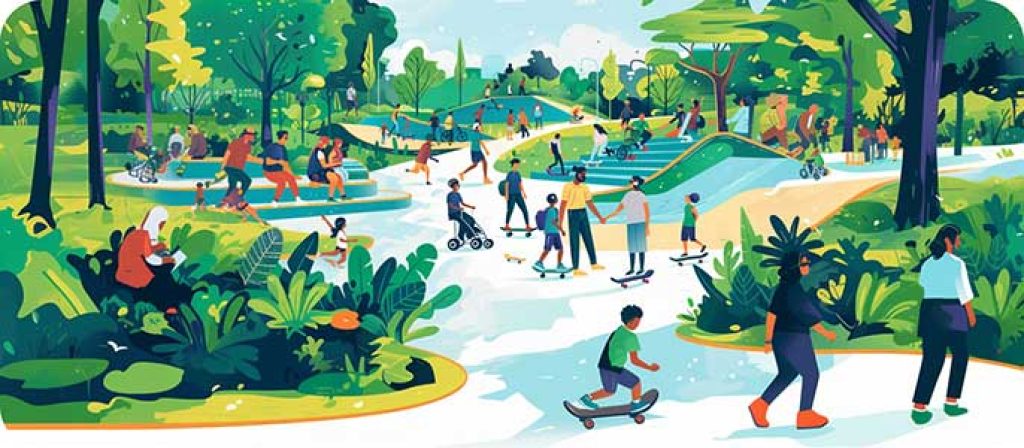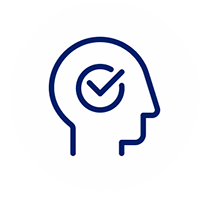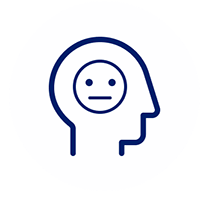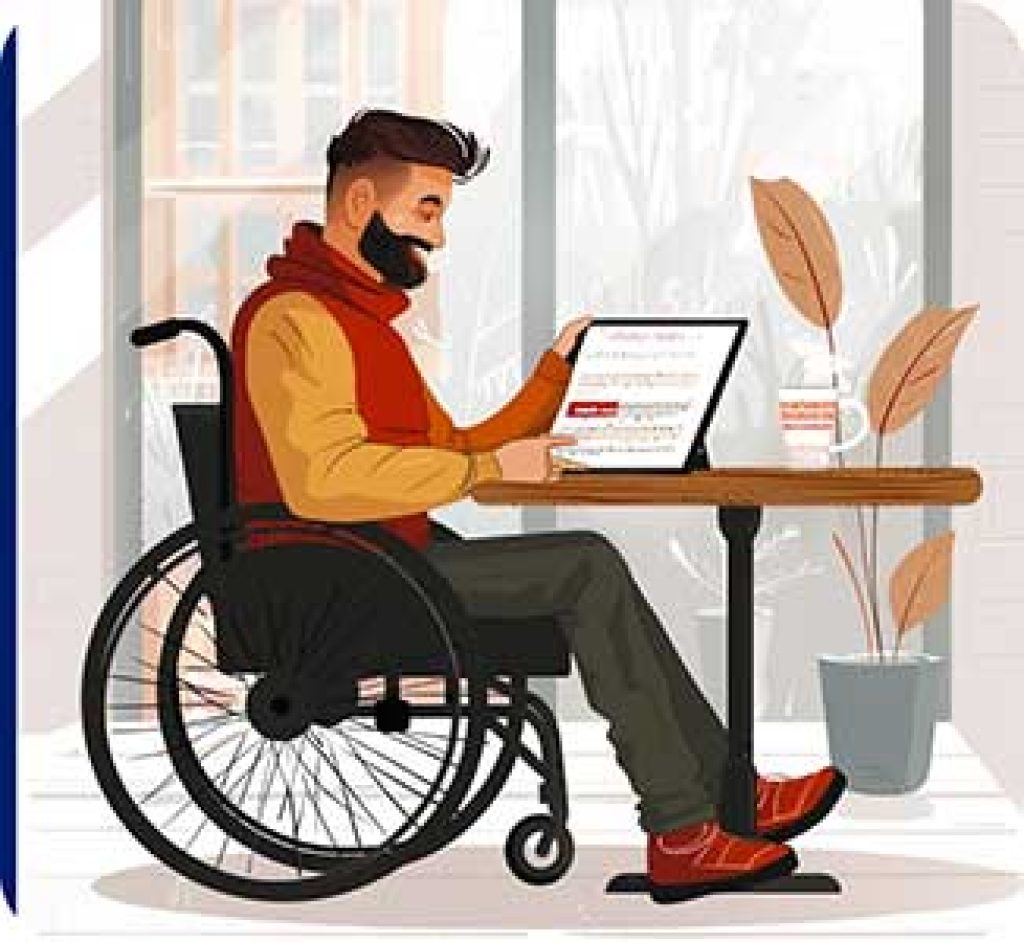Universal Design: How Inclusive Thinking Builds Equality & Accessibility
Shaping Accessible Spaces, Laying Foundations For The Future
Universal design (UD) is both a guiding philosophy and a proactive approach to creating products and environments that are inherently usable by everyone, to the greatest extent possible, without the need for adaptation or specialized design. UD aims to remove barriers and build in usability as a default for people of all abilities, ages, and backgrounds. This approach is not limited to the physical environment; it extends to digital spaces, considering the best ways to open up websites, applications, and digital media so that they are accessible to everyone.
In today's increasingly digital world, universal design is a critical component of any strategy for achieving and offering equitable access to information, building in accessibility by default for learning and teaching at all levels of education, entertainment, and social interaction for people with disabilities. By incorporating UD principles in physical and digital spaces, making support for diverse needs integral, we create a more inclusive, accessible landscape for everyone.

7 Core Principles of Universal Design
Universal design focuses on making environments, products and systems accessible and intuitive for all users, in both physical and digital spaces. UD can be broken down into seven core principles. These principles are clear, easy to learn as a concept, and in practice can be applied to everything from physical products to educational materials.
Results of the design should be usable by people with diverse abilities, regardless of their physical, sensory, or cognitive limitations. Designs should be inclusive, providing the same means of use for all users: identical whenever possible, equivalent when not. An example of equitable use is ramps instead of stairs.
Multiple methods of use should be provided, serving a wide range of individual preferences and abilities. Among other considerations, this involves providing choice in methods of use, adaptability to the user's pace, and accommodation of left or right-handed access and use.
 Simplicity & Intuitiveness
Simplicity & IntuitivenessThe design and its products should be easy to understand, navigate, and operate, with clear and predictable interactions. The design or the results of this design should be easy to understand, even for people who have never encountered it before, and regardless of the user's experience, knowledge, language skills, or current concentration level. This principle emphasizes straightforward and predictable designs that provide the user with smooth orientation and comprehension.
 Perceptible Information
Perceptible InformationEveryone should be able to perceive all the information through whichever of their senses works best, be it sight, hearing, or touch. This could involve offering auditory cues alongside visuals, like voiceovers in presentation videos, or providing tactile signage as well as Braille for visually impaired users. Perceptible Information also emphasizes clear and concise presentation.
 Tolerance for Error
Tolerance for ErrorThis principle acknowledges that mistakes happen, and designs features to minimize their negative consequences. The design should be forgiving of errors. This could be features like auto-correct, undo buttons, or clear warnings before an action is permanent, giving users a chance to double-check their choices before they take action.
 Low Physical Effort
Low Physical EffortThe design shouldn't require too much physical strength or dexterity to use, so everyone can interact with the design comfortably, regardless of their condition, age, or abilities. This could be things like automatic doors, lever handles instead of knobs, or voice controls.
 Size and Space for Approach and Use
Size and Space for Approach and UseThis principle acknowledges that people come in all shapes and sizes, and their mobility can vary. There should be enough space for everyone to comfortably use a physical space design. This means wide doorways, enough space to maneuver a wheelchair, and controls positioned within easy reach for users of varying heights, whether seated or standing.
Universal Design For Learning & Education
Building on the concept of universal design, educators can create inclusive learning environments by incorporating its principles. This framework, known as Universal Design for Learning (UDL), aims to make learning achievable for all students despite their individual differences. UDL goes beyond providing accommodations after the fact. Instead, educators design flexible materials and activities with varied approaches from the outset, considering the needs of all students, so that they can access and engage with the learning goals.
Universal Design for Learning (UDL) is a powerful systemic application of UD, but Universal Design principles span a wider reach, adding usability and inclusion into the design and development process in many areas. As well as in classrooms, UD principles can apply to the creation of online spaces and digital interfaces. By following these principles, designers can create sites, pages, platforms and applications that work well for a diverse range of users.
Applying Universal Design in Digital Content Creation
When creating and developing web and digital content, the principles of universal design should guide the process from conception to implementation. Content creators, web designers, developers and administrators should focus on making content accessible and navigable for all, including people with disabilities.
A Quick UD How-To By Role & Task
For Content Creators & Front End Designers
- Use clear and concise language, with proper grammar and structure.
- Provide alternative text descriptions for images and non-text content.
- Utilize captions and transcripts for audio and video content.
- Offer content in various formats, such as text, audio, and video, to provide accessible options for different abilities, and to serve multiple learning styles.
- Use color contrast effectively to optimize readability for people with visual impairments.
- Utilize responsive design that adapts to different screen sizes and devices.
For Web, Digital & Software Developers
- Build in and test for keyboard accessibility for all interactive elements.
- Implement clear and consistent navigation structures.
- Incorporate compatibility and support for screen readers.
- Offer customizable text sizes everywhere.
- Allow for flexibility in all user interfaces.
For Web Administrators
- Update often for all tech and accessibility options.
- Maintain accessible website templates and content management systems (CMS).
- Monitor website accessibility through regular automated and hands-on testing, including accessibility testing tools.
- Address any accessibility issues promptly to provide continuous service for the user experience.
For Business Management and Team Leadership
- Prioritize UD principles in design and development processes.
- Provide training and resources on universal design for all team members.
- Integrate accessibility testing into your development workflow.

The Impact Of Universal Design On Web Accessibility
Universal Design (UD) plays a transformative role in web accessibility. By considering UD principles from the outset of web development, we can create websites and digital content that are accessible by default: that is, inherently accessible to a broad range of users with diverse abilities. This proactive approach eliminates the need for retrofitting websites with accessibility features later, resulting in a more efficient and cost-effective development process.
Do follow the recommendations and technical standards of the WCAG (Web Content Accessibility Guidelines), currently in the 2.2 release and with WCAG 3.0 in development, as one important and comprehensive way to incorporate accessibility in your UD approach to inclusive web and digital design. Developed within the WAI (Web Accessibility Initiative) by the independent W3C standards body, the WCAG have been used as the foundation for web and digital accessibility law around the world.
5 Top Tips To Incorporate UD Into Web Development
While we’ve gone through this by task and role above, these important tips apply anywhere, to all contributors:
- Design Responsively
Prioritize responsive design so websites automatically adapt to different screen sizes and devices. This flexibility allows users with varying motor skills to navigate and interact with the website effectively. - Implement Keyboard Navigability
Make sure all interactive elements on the website, including menus, buttons, and links, are fully functional using just a keyboard. This is crucial for users who rely on assistive technologies like screen readers, or for people with limited dexterity who cannot use a mouse. - Add Alternative Text
Provide clear and concise alternative text descriptions (alt text) for all images and non-text content. This conveys the meaning of the image to users who cannot see it, including people with visual impairments and people using screen readers. - Boost Color Contrast
Emphasize text readability by setting strong color contrasts between text and background elements. This considers the needs of people with visual impairments, including those with low vision or color blindness. - Use Clear and Simple Language
In all text content, keep to plain language that is easy to understand. Avoid overly complex sentence structures and technical jargon. This benefits users with cognitive disabilities and those with limited literacy skills. It also keeps people from getting lost in your information or on your page, and that applies to the general public as well.
Graphic Suggestion: A team of designers and developers discussing a project, mapping out a process or plan on a whiteboard.
Assistive Technologies Bridging the Digital Divide
Universal Design (UD) principles are the gold standard for creating inherently accessible websites and digital content. However, in the real world, many existing websites are not yet fully UD or accessibility compliant. This is where accessibility overlays and assistive technologies come in, working to empower users with disabilities.
Accessibility Overlays: Stepping Into The Gap
These browser extensions or widgets offer a quick solution that can improve accessibility for some users. When enabled, overlays offer users a way to adjust elements like color contrast, font size, and text spacing, making websites more readable for people with visual impairments. They can also add or improve features like keyboard navigation and screen reader compatibility, temporarily bypassing website design limitations. Overlays may not fully address all accessibility issues at the root cause, but they can be a valuable stopgap measure, especially for users who need to use a non-compliant website right away. These end users have no control over the design or coding of a website, and no way to fix the accessibility problems they encounter, but overlays can be an interim solution until the accessibility issues are thoroughly fixed at the source. For users with disabilities, this means having the power to adjust web content to their needs, making digital spaces more navigable and readable in real-time. Accessibility overlays can significantly contribute to making digital content more immediately accessible and user-friendly for individuals with disabilities.
Assistive Technologies
Also known as adaptive tools and technologies, assistive tech includes an array of helpful and specialized software and hardware tools that can in certain cases provide real, long-term solutions for users with disabilities. Some popular examples include:
- Screen Readers
Used extensively by blind and visually impaired individuals, these programs convert text on a screen to spoken audio. - On-Screen Magnifiers
Bundled with operating systems on many devices, these tools enlarge on-screen content, making it easier for users with low vision to see details. - Voice Recognition Software
This technology empowers users with mobility limitations to control their computers and interact with digital interfaces using voice commands.
By combining universal design principles with assistive and bridge technologies, we can create a more inclusive digital landscape that is accessible to everyone. In this way, users with disabilities can access, interact with, and benefit from digital content with independence and ease.
Universal Design: A Win for Everyone
When composing or refreshing digital and web products and services, it is highly advisable to take the values and guiding truths of universal design to best determine direction, design, development and modifications, and then run with that knowledge to integrate it in accordance with current web accessibility standards and regulations.
The universal design + accessibility methodology has transformative positive outcomes which include:
- Improved Usability
Accessible design principles prioritize clarity, consistency, and logical structure, and provide more precise labeling, more intuitive navigation, and additional input options. This makes navigation and information access natural and efficient for everyone, regardless of technical expertise, experience, or abilities. - Diverse Needs Accommodated
Accessibility features like keyboard navigation, alternative text tags, and captions are designed to serve users with motor or visual impairments. However, everyone utilizes these features at times, for example using voice commands while driving, or reading video captions in noisy environments. - Improved SEO and Reach
Accessible websites with clear structure and descriptive elements rank higher in search engine results, increasing visibility for everyone seeking information, and boosting organizational recognition. - Reduced Friction and Errors
Accessible design, equally to universal design, corrects confusing interfaces and minimizes unclear or missing error messages, creating a smoother and more positive experience for all users. - Future-Proofing
Web accessibility aligns with shifting and maturing technologies and assistive devices, thus offering all users, including those who may develop impairments in the future, seamless access to information. - Cognitive Accessibility
Beyond physical limitations, both the principles of universal design and the principles and practice of accessibility recognize and factor in cognitive diversity. Clear language, logical layout, and alternative format availability all benefit users with learning disabilities, and users who process information differently. - Value Engineering
Designing for accessibility from the outset avoids costly retrofits later, eliminating waste and inefficiency, and paying off in long-term cost savings. It also eliminates maintenance nightmares and technical debt. - Innovation Catalyst
Frequently requiring creative problem-solving, the process of integrating accessibility and following universal design principles could result in unexpected breakthroughs and new product features that support all users. - Increased Brand Loyalty
Everyone appreciates a user-friendly and inclusive experience. And in a crowded market, superior user satisfaction genuinely differentiates your offerings, attracting and retaining customers and reducing churn.
Last but not least, the result of universal design that takes all users into account often leads to:
- The Satisfaction Loop
Happy users are more likely to provide valuable feedback that can inform product development, marketing strategies, and operational processes, leading to continuous improvement and efficiency gains. This in turn lead to more satisfied users.
This type of positive repeating cycle measurably impacts key metrics like revenue, cost, brand perception, and employee morale, driving sustainable growth and long-term success.
In short, improving the overall user experience is never a bad idea. As the saying goes, a rising tide lifts all boats, or to decode the metaphor, making digital environments more usable for people with disabilities accrues collateral benefits for everyone.

Designing Better By Designing For Everyone
Implementing UD can present challenges. Some may worry about increased costs or design complexities. However, research shows that implementing UD principles can often lead to cost savings in the long run by streamlining design processes and creating products usable by a wider audience. The reality is that making environments accessible and inclusive often involves minimal additional cost and effort. Addressing these challenges starts with debunking myths and educating stakeholders about the simplicity and feasibility of universal design. The real challenge lies in shifting mindsets and prioritizing UD from the start of the design process.
Universal design is, at its core, the concept of recognizing the vast spectrum of human experience and extrapolating from that knowledge to create products, services, and spaces that are inherently usable by everyone, regardless of ability. This means creating smart and innovative solutions that consider diverse needs. Ultimately, UD benefits everyone. By creating inclusive experiences, we tap into a wider range of talents and perspectives, building, maintaining and encouraging the development of a more engaged and productive society. This collective problem-solving approach is how we achieve greater progress on a larger scale.
FAQs
Universal design intentionally and proactively incorporates elements that meet a wide range of abilities and preferences. Rather than creating separate solutions for people with disabilities, UD means making one solution that works for everyone.
Universal design is thoughtful of the needs of older adults by accommodating the natural changes in ability that occur over time. Features like lever door handles and walk-in showers take into account the needs of seniors as well as people with mobility issues or balance impairment, offering built-in independence and safety. And features like website text resizing are a boost to the user experience for aging users as well as those with visual impairments.
Universal Design can apply differently to many fields and sectors. Each field, such as web design or architectural design, will have its own resources. One good place to start on the general principles and practices of Universal Design, especially for educators and as it applies to learning experiences, is the CAST site online. For more advanced understanding of accessibility and universal design for learning and other applications, check out educational institutions like Georgia Tech’s Center for Inclusive Design and Innovation.
Advancements don’t change the principles, they merely broaden the scope. Technological advancements expand the possibilities for universal design, offering new ways to accommodate diverse needs. From voice-activated devices to AI-powered accessibility features, technology plays a key role in pushing the boundaries of what's possible in creating inclusive environments.









